

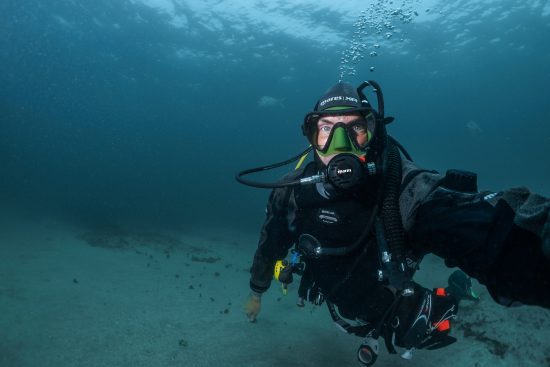
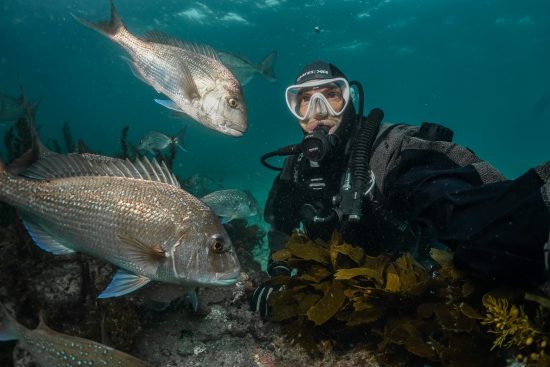
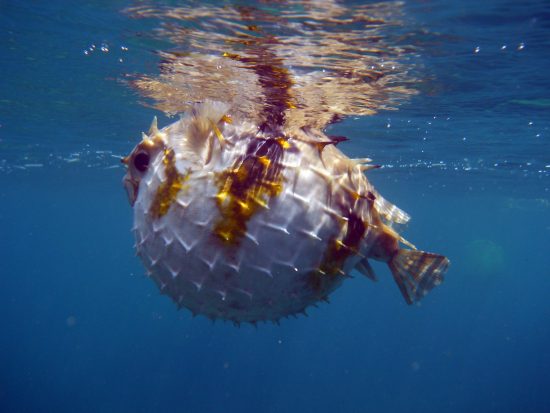
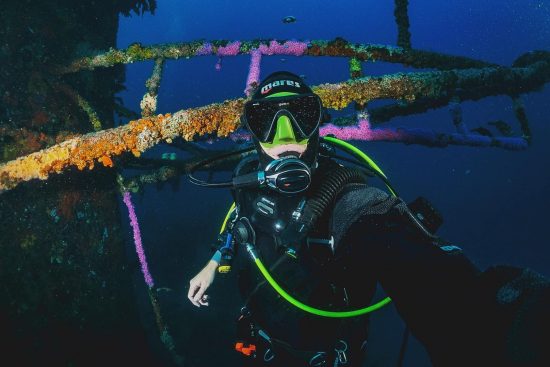
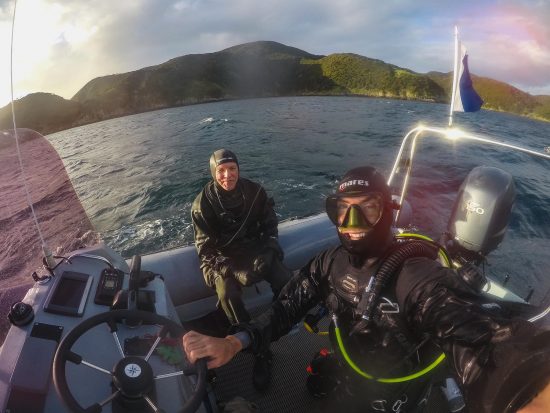
Diving in a dry suit
Diving in a dry suit can be an intimidating prospect. Being dry underwater? That sounds crazy! "Did you hear of that guy who flipped upside down, the air went to his feet and he flew to the surface?", "Oh by the way, you need to carry a tonne (excuse the pun)". Rumours, myths and legends all surround dry suit diving, which can make you hesitant to give it a go, but once you do, I promise you will never look back!
Now, diving in wetsuits is great. I have dived in them my whole life, winter, summer, autumn and spring quite comfortably, and quite honestly, in New Zealand, a 9mm wetsuit is suitable all year round, BUT, when it comes to technical diving and diving deeper, the added warmth of being dry, YES DRY, makes your dive a whole lot safer and so much more enjoyable.
Whether you're a photographer, a technical diver, a wreck diver or like exploring caves, dry suits are great for all types of diving. They are, however, very different to diving in a wetsuit, so here's a few tips to make your dry suit diving experience just that bit more enjoyable…
Buoyancy is key
When you take the plunge in a dry suit, buoyancy is not as you know it, because of the magic of your suit. You are full of air, which keeps you warmer than a wetsuit. The downside is that you are also more buoyant. For this reason you need two things: more weight and excellent buoyancy control, that's if you don't want an uncontrolled ascent!
Many divers use their dry suits instead of their BCD's, this saves air and you don't need to juggle 2 buoyancy devices. Basically deflate your BCD until it's empty, and if your weight is correct then you should begin to sink! As you descend, slowly add air to your suit in short bursts. This will slow your descent, warm up your suit and stop compression or suit ‘squeeze’. Once you have reached your intended depth, simply perfect your buoyancy and begin your dive, venting (deflating) or inflating as required. Once it's time to return to the surface. begin venting the suit, as you know air expands and you will become positively buoyant on your ascent. All dry suits have an auto exhaust valve and a manual option which you should use to control your ascent, remembering your safety stop and keeping an eye on your ascent speed. Once on the surface, feel free to inflate your suit and BCD to ensure you are positively buoyant, comfortable and ready for a pickup.
Don't be a puffed up puffer
Carrying extra weight sucks, but being cold sucks more! As a scuba diver, you endeavour to carry as little weight as possible, but diving in a dry suit, well that's just not possible. As you descend, you inflate your suit which aids to stop compression and keep you warm, but this also makes you positively buoyant, so if you are underweighted, up you go.
Weight will take a fair few dives to get right. Diving in shallow water in a drysuit you will need A LOT more weight. Spend the time to get it right and you will enjoy your dry suit dives a heck of a lot more and spend less time floating around on the surface like a pufferfish that's just been chased by a seal.
If it fits!
There are several different types of dry suit and all have their pros / cons and different uses. It's best to head in to your local dive centre and discuss your dry suit needs. Overall it needs to fit. A dry suit that is too big and baggy creates drag and hinders air flow in your suit. One that is too small constricts movement and makes simple tasks incredibly difficult. Remember, you will also be wearing warm undergarments under your suit, so allow for this extra room and try on the suit with your garments if possible.
Take the SSI Drysuit Specialty Course
Playing in new gear is fun, but it is important to get the basic skills right before you head out for a “proper dive”. Failing to do so can lead to flooded dry suits, time spent as the “puffed up puffer” or being cold and miserable, and we don't want that! Taking the Dry Suit Specialty course takes away the short but steep learning curve of diving in a drysuit. The course runs through what suit is right for you, emergency techniques and how to manage your buoyancy, leaving you more time to enjoy the underwater world.
Diving in a dry suit is amazing, can you imagine being dry underwater? Well, I can confirm, it's as good as it sounds. Even on the wettest, coldest days here in New Zealand I am not put off diving. This is because, despite the hideously cold surface conditions, I know I will still be toasty warm and dry on the sea floor.
If you haven't tried dry suit diving, give it a go, it will open up so many more diving opportunities and I guarantee it'll change your life!
Check out Mares' XR3 Dry Suits over on Mares.com!
 Dan
Dan 15th November 2021
15th November 2021